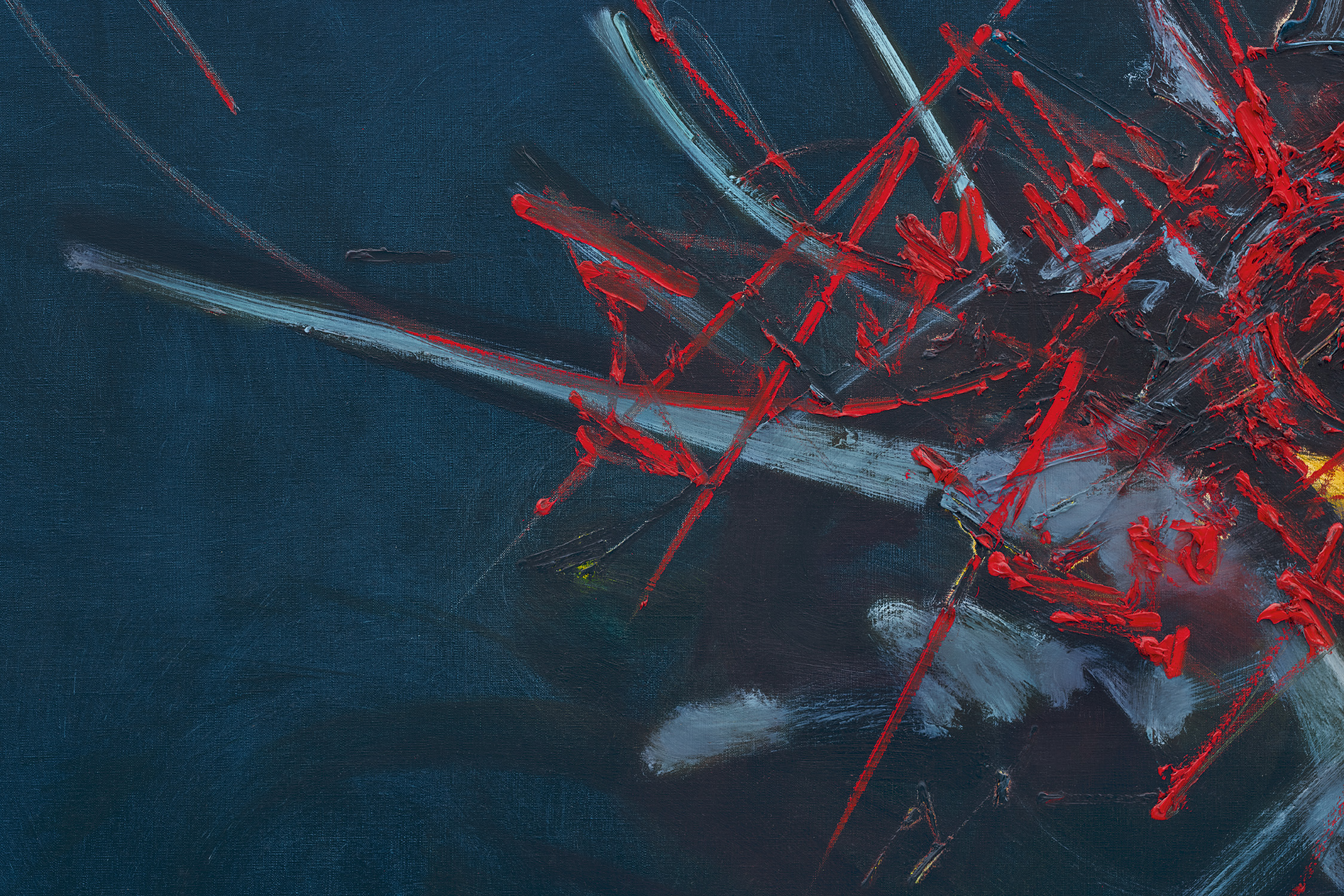







32
Georges Mathieu
Saxifrage
signed 'Mathieu' lower right; further titled '"SAXIFRAGE II"' on the stretcher
oil on canvas
97.5 x 195 cm. (38 3/8 x 76 3/4 in.)
Painted in 1980, this work is accompanied by a certificate of authenticity GM80058 issued by the Comité Georges Mathieu.